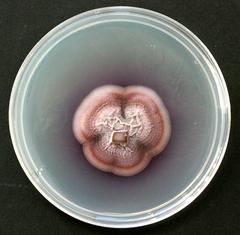You are hereBlogs / WcP.Scientific.Mind's blog / Nature provides. A tree fungus could provide green fuel that can be pumped directly into vehicle tanks: Patagonian rainforest
Nature provides. A tree fungus could provide green fuel that can be pumped directly into vehicle tanks: Patagonian rainforest

(quote)
A tree fungus could provide green fuel that can be pumped directly into vehicle tanks, US scientists say. The organism, found in the Patagonian rainforest, naturally produces a mixture of chemicals that is remarkably similar to diesel. "These are the first organisms that have been found that make many of the ingredients of diesel," said Professor Gary Strobel from Montana State University. "This is a major discovery."
The discovery may offer an alternative to fossil fuels, said Strobel, MSU professor of plant sciences and plant pathology, who travels the world looking for exotic plants that may contain beneficial microbes. The find is even bigger, he said, than his 1993 discovery of fungus that contained the anticancer drug taxol. The fungus, called Gliocladium roseum and discovered growing inside the ulmo tree (Eucryphia cordifolia) in northern Patagonia, produces a range of hydrocarbon molecules that are virtually identical to the fuel-grade compounds in existing fossil fuels.

Strobel calls the fuel produced by the fungus "myco-diesel," from the Greek-derived root word for the study of fungi - mycology. "This is the only organism that has ever been shown to produce such an important combination of fuel substances," said Strobel. "The fungus can even make these diesel compounds from cellulose, which would make it a better source of biofuel than anything we use at the moment."
Many simple organisms, such as algae, are known to make chemicals that are similar to the hydrocarbons present in transport fuel but, according to Strobel, none produce the explosive high energy density found in this fungus. Strobel said that the chemical mixture produced could be used in a modern diesel engine without any modification. Another advantage of the fungus is its ability to eat up cellulose, the compound that makes up much of the organic waste that is currently discarded, such as stalks and sawdust. Converting this plant waste into fuels is an important goal for the biofuel industry, which currently uses food crops such as corn.

Intense research into ways of making ethanol fuel directly from cellulose now is taking place in public, private and university labs, and several companies are producing demonstration scale cellulosic ethanol from wood waste, from municipal solid waste and from agricultural residue. Nearly 430 million tons of plant waste are produced from U.S. farmland alone every year, material that scientists are learning to convert to biofuel. In principle, biofuels are attractive replacements for liquid fossil fuels used in transport that generate greenhouse gases. The European Union has set biofuel targets of 5.75% by 2010 and 10% by 2020. But critics say current biofuels scarcely reduce greenhouse gas emissions and cause food price rises and deforestation. Producing biofuels sustainably is now a target and this latest work has been greeted by experts as an encouraging step.
Scott Strobel said his team is already screening the fungus' genome. Besides determining the complete genetic makeup of the fungus, they will run a series of genetic and biochemical tests to identify the genes responsible for its diesel-making properties. "The broader question is, what is responsible for the production of these compounds," Scott Strobel said. "If you can identify that, you can hopefully scale it up so you end up with better efficiency of production." Scientists in a variety of disciplines may be able to combine their talents to optimize production and find a way to turn what is essentially a vapor into a burnable, liquid fuel.
(unquote)
Images courtesy of Gary Strobel and Guardian
Original Source: The Guradian, UK and Environment News Service


















